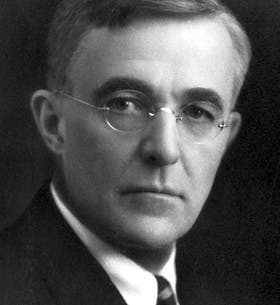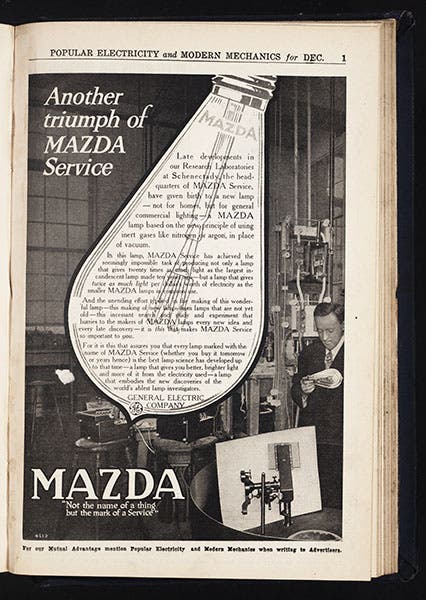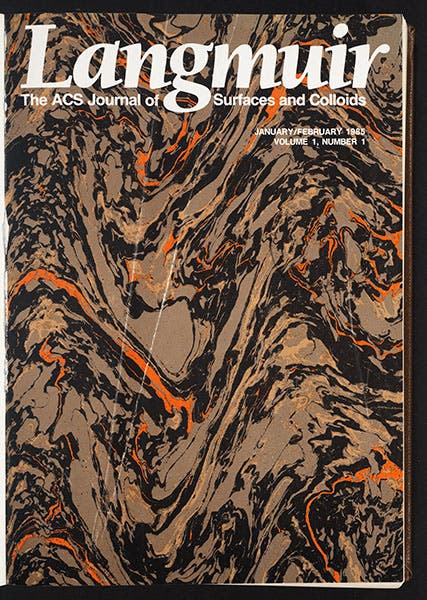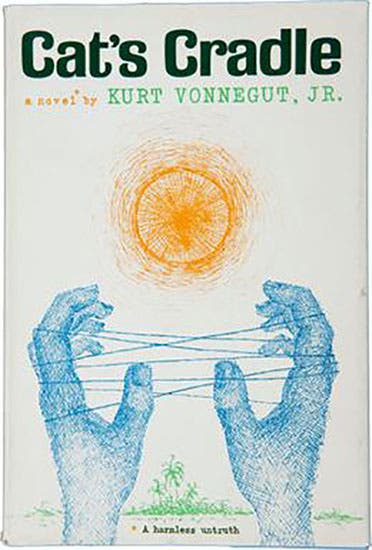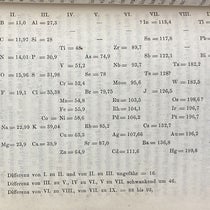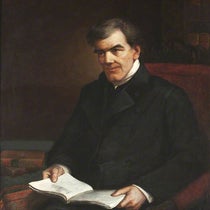Scientist of the Day - Irving Langmuir
Irving Langmuir, an American physical chemist, was born in Brooklyn on January 31, 1881. After graduating from Columbia University with a degree in metallurgical engineering, Langmuir traveled to University of Göttingen and earned his doctorate under the supervision of the renowned theoretician, Walther Nernst. With a solid academic pedigree, Langmuir returned to the United States in 1906 and secured a job at Stevens Institute of Technology. He soon discovered that the life of a university professor disagreed with him. He found the teaching load too heavy, the pay too low, and research time too limited.
In 1909, Langmuir left the ivory tower behind to join the staff of the General Electric Research Laboratory in Schenectady, New York. With encouragement from the lab’s director, Willis Whitney, he decided to investigate the behavior of the new tungsten filaments that GE was starting to incorporate into its light bulbs. Based on careful observation of how different gases reacted in proximity to the heated wire, Langmuir was able to reduce the rate at which tungsten evaporated from the filament by twisting it into a spiral and filling the surrounding bulb with nitrogen or argon. The resulting bulbs, which GE marketed as part of their Mazda product line (second image), were cheaper and more efficient than arc lighting or other incandescent lamps, which kept their filaments in a vacuum. (The Mazda trademark was derived from Ahura Mazda, the Zoroastrian divinity associated with light and wisdom.)
Langmuir’s filament experiments marked the beginning of a prolific career at General Electric that lasted until the early 1950s. His familiarity with light bulbs left him well-positioned to contribute to GE’s efforts to develop improved vacuum tubes for use in radios, X-rays, and other electronic equipment. Similarly, his investigations into the charged particles emitted from filaments led to some of the earliest studies of ionized gases. (It was Langmuir who coined the term “plasma” to describe these materials in 1928.) Langmuir became especially well-known for his work on surface chemistry, which seeks to understand the reactions that occur at the boundaries between different substances. His research in this field was significant enough to win the Nobel Prize in Chemistry in 1932 and lead the American Chemical Society to name its journal of surface chemistry and colloids Langmuir (third image) in his honor.
It is difficult to overstate the breadth of Irving Langmuir’s research interests. Over the course of four decades at General Electric, he published over 200 papers on a wide range of scientific subjects. The Linda Hall Library owns a copy of his collected writings, which were published in 12 volumes in 1962 (fourth image). Among the topics represented in its pages are everything from improved vacuum pumps to arc welding to weather control.

The Collected Works of Irving Langmuir (Linda Hall Library)
Although this last topic occupied only a small portion of his scientific career, it would ultimately bring Langmuir a degree of unexpected notoriety. One of the researchers involved in General Electric’s weather control experiments was a physicist named Bernard Vonnegut, who was involved in cloud seeding experiments to generate snow. Their research group harbored broader goals, however, including full-fledged weather control for both civilian and military purposes. Bernard discussed this research with his brother, Kurt, who was working as a publicist at GE.
Years later, Kurt Vonnegut, Jr. drew upon his brother’s experiences while writing a science-fiction novel entitled Cat’s Cradle (fifth image). The plot revolves around a material called ice-nine, a form of water with a melting point of 45.8°C (114.4°F) capable of freezing any other form of water that it touches. This extremely dangerous substance is developed by Felix Hoenikker, a well-meaning Nobel laureate with a passion for fundamental research, and Vonnegut later acknowledged that the parallels with Irving Langmuir were not coincidental.
It is impossible to say whether Langmuir appreciated Vonnegut’s literary homage, since he passed away in 1957, five years before the publication of Cat’s Cradle. So it goes.
Benjamin Gross, Vice President for Research and Scholarship, Linda Hall Library. Comments or corrections are welcome; please direct to grossb@lindahall.org.

